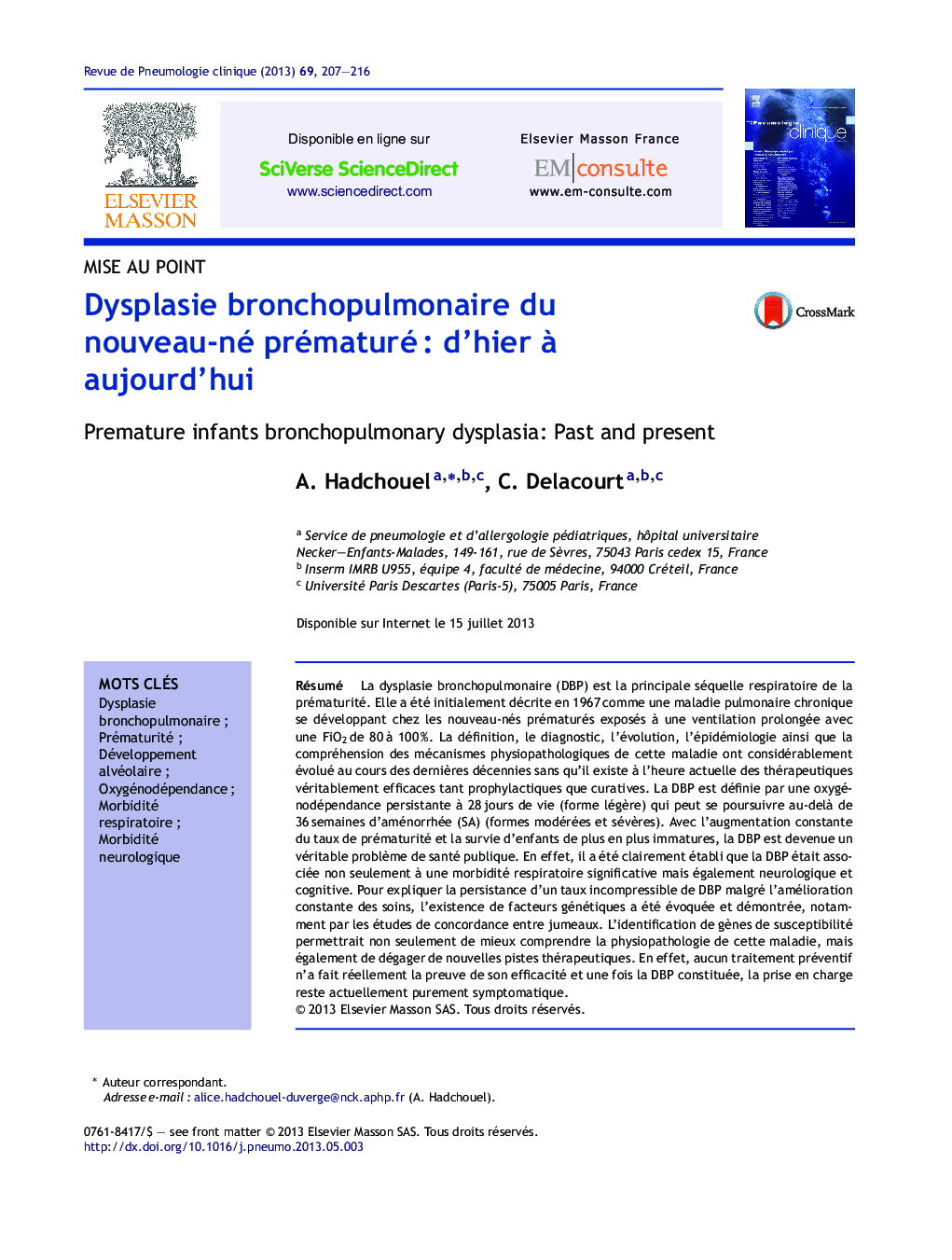| Article ID | Journal | Published Year | Pages | File Type |
|---|---|---|---|---|
| 3419717 | Revue de Pneumologie Clinique | 2013 | 10 Pages |
Abstract
Bronchopulmonary dysplasia (BPD) is the most common chronic respiratory disease in premature infants. BPD was first described by Northway in 1967 as a chronic respiratory condition that developed in premature infants exposed to mechanical ventilation and high oxygen supplementation. DBP is currently defined by the need for supplemental oxygen at 28Â days of life (mild BPD) and at the 36Â weeks of post-menstrual age (moderate and severe BPD). With the advances of neonatal care, epidemiological characteristics and mechanisms of the disease as well as pathological characteristics and clinical course have profoundly changed within the last two decades, but still no effective curative treatment exists and BPD continue to occur among 10 to 20% of premature infants. Furthermore, BPD is a significant source of respiratory and neuro-cognitive morbidities. Thus, its treatment makes a considerable demand on health services. Regarding its pathophysiological mechanisms, it is now established that BPD is a complex disease combining genetic susceptibility and environmental injuries. The identification of genetic variants involved in BPD is a potential source of innovative development in terms of diagnosis and treatment. Indeed, no curative or effective prophylactic therapeutic exists and BPD treatment is currently symptomatic.
Keywords
Related Topics
Health Sciences
Medicine and Dentistry
Infectious Diseases
Authors
A. Hadchouel, C. Delacourt,
